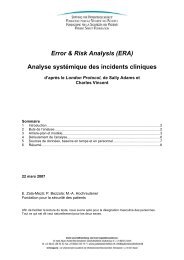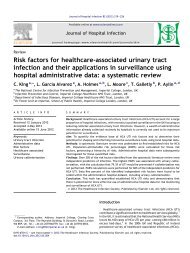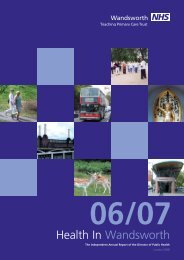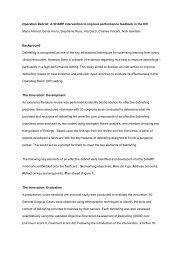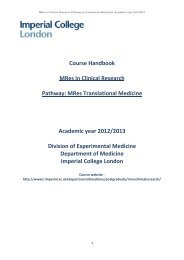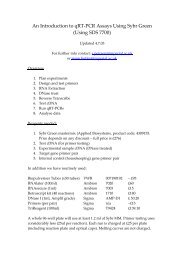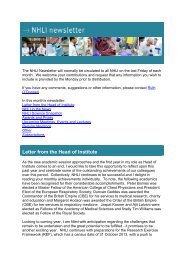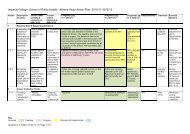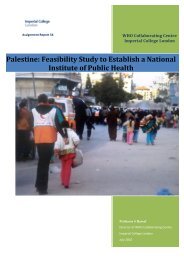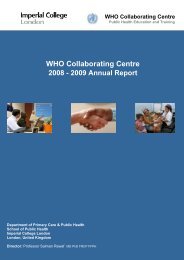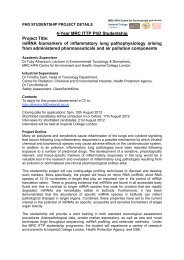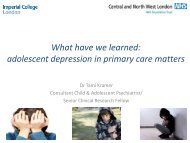QOF Plus Year 1 - Imperial College London
QOF Plus Year 1 - Imperial College London
QOF Plus Year 1 - Imperial College London
You also want an ePaper? Increase the reach of your titles
YUMPU automatically turns print PDFs into web optimized ePapers that Google loves.
other complex high-technology settings, such as the aviation industry, has shown thatsafety incidents are not simply the result of human mistakes, such as inattention orforgetfulness, nor are they random or rare – in fact certain organisational and culturalfactors can make them more likely to happen. Also, where such a mechanism exists,confidential SEA reports should be passed to local clinical governance leads so there maybe an opportunity for lessons learned to be shared with others.” (Bowie and Pringle,2008)The NPSA encourages the:“confidential and anonymous reporting of incidents that caused no harm to patients, orwhere harm was averted, as well as events with a serious outcome which are more likelyto be flagged up in existing clinical governance and reporting systems. It is theseprevented patient safety incidents (known as near misses) that can provide the mostvaluable learning for the NHS because they can highlight problem areas where there isthe potential for things to go wrong in the future. They can also highlight ways in whichstaff have prevented the incident harming the patient (or have minimised the actualharm caused to the patient), and the NPSA is looking to learn from these actions toencourage the spread of best practice. All NHS organisations in the UK should have localarrangements in place to enable primary care staff to report patient safety incidents.”(Bowie and Pringle, 2008)To date, few reports on patient safety incidents are received by the National Patient SafetyAgency (NPSA) from general practice, and the NPSA is looking at ways to improve the level ofreporting. It is proposed that practices will be incentivised, through <strong>QOF</strong>+, to make use of thenational reporting e-form. In addition incentives will be provided for submission of SEAsummaries to an annual PCT audit in order to enable lessons to be shared with others andencourage the spread of best practice.Degree of perceived professional consensusThere is professional consensus from the RCGP and the BMA on the principles relating to theproposed indicators. In addition, the proposed indicators which relate to child protection havebeen derived from a toolkit produced by the NSPCC and the RCGP on Safeguarding Children andYoung People in General Practice.Degree of perceived support from patients and carersThere is strong support from patients and carers for the inclusion of indicators on patient safety.In addition, the proposed indicators which relate to child protection have been derived from atoolkit produced by the NSPCC and the RCGP on ‘Safeguarding Children and Young People inGeneral Practice’.89



